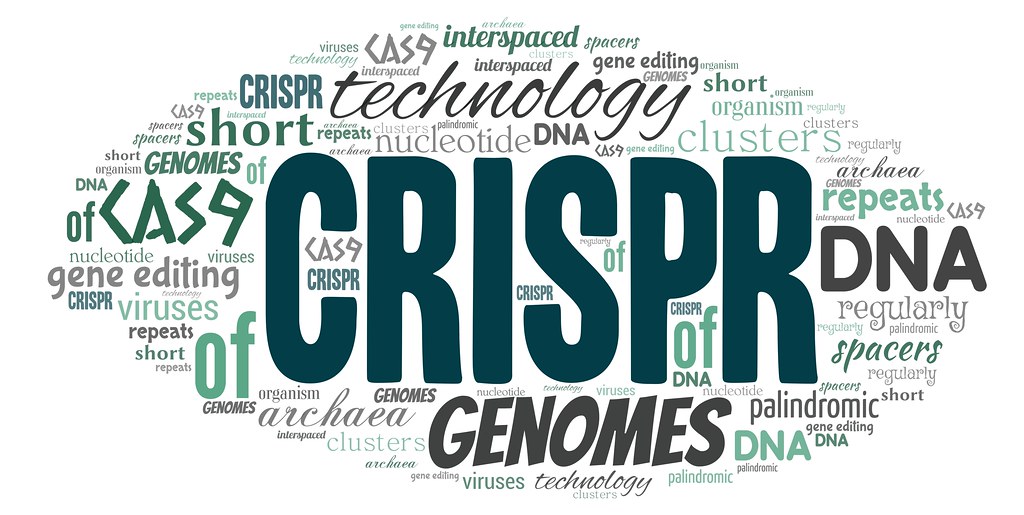After facing difficulty in finding guide RNAs for CRISPR studies, Dr. Perli and Navya reviewed the Weissmann Lab algorithm that was being used to find small guide RNAs to investigate the possibility of improving it. Reading the Weissmann paper revealed the Weissman algorithm used phenotype to measure guide RNA efficacy rather than a quantitative approach. We learned that quantitative data, for machine learning, often leads to more accurate results. As explained in our project description, we use RT qRT-PCR to influence our results.
When COVID-19 struck, we decided that we would do a 100% software project with no wet lab work as a high school team. Since this was a software project, and there would be no wet lab work, we saw if people from multiple high schools would be interested in the team, rather than just one high school, and in the end nine students from three different high schools joined the team across the United States. With this, we achieved a diversity of viewpoints from across the United States.
Unfortunately, we found that the Weissman algorithm on the web was outdated and buggy. Our team could not fix the issues on our own. Although attempts were made to contact Weissman, no result came. We needed help to update the code, because it was seriously jambled, and that led us to contact Netrovert Software, which has much experience with Machine Learning projects. With intensive help from Netrovert, we were able to get the code to function. Netrovert also offered ways to update and clean up our code, which was very helpful. They also suggested to us ways in which we cleaned up and debugged the code, and offered to give access to private AWS for our research, which we made good use of, especially with security concerns which we detail later.
After these initial obstacles, we began to interview several stakeholders relevant to CRISPR technology. We interviewed people with experience from across the world, namely India, Australia, Japan, and America, to influence our project.
What we did: We ran against the entire genome to make sure all off-target potential was minimized. Originally, the Weissman lab didn’t source the whole genome for off-targets, they only chose unmasked regions and ignored the mitochondrial genome. Since off-target was such a huge concern, we decided to implement the whole genome so people would definitively know. Many algorithms only look for off-targets in the exons. They don’t care about intergenic regions or introns, but our algorithm searches the whole genome. We decided to be much more stringent.
What we did: We wanted to make sure our data was protected and couldn’t get into the hands of rogue scientists. We learned that one of the best ways to avoid this was working primarily on a private AWS and having external review boards reviewing our work. We incorporated this by asking collaborators to review code and project to make sure it was safe and accurate.
What we did: The tables for our TSS data were made clear in the algorithm and were a big factor to our final product: we also considered primary and secondary TSS. However, we looked into how our score could be even more tuned towards guide RNAs near the Transcription Start Site (TSS). We saw that the data actually showed trends for a non-linear relationship for Score vs. Distance from TSS. We used a power-function rather than a linear function to relate Score Vs. Distance from TSS for the data to emphasize proximity to promoters even more. This makes it even more sensitive to TSS distance, and the more accurate results because of this demonstrated that this was a meaningful implementation.
What we did: Our model can have different genomes placed into it, and we have experimented with using the Bos Taurus genome. We plan to make the interchangeability of genomes more user-friendly in our cloud website in the future.

When COVID-19 struck, we decided that we would do a 100% software project with no wet lab work as a high school team. Since this was a software project, and there would be no wet lab work, we saw if people from multiple high schools would be interested in the team, rather than just one high school, and in the end nine students from three different high schools joined the team across the United States. With this, we achieved a diversity of viewpoints from across the United States.
Unfortunately, we found that the Weissman algorithm on the web was outdated and buggy. Our team could not fix the issues on our own. Although attempts were made to contact Weissman, no result came. We needed help to update the code, because it was seriously jambled, and that led us to contact Netrovert Software, which has much experience with Machine Learning projects. With intensive help from Netrovert, we were able to get the code to function. Netrovert also offered ways to update and clean up our code, which was very helpful. They also suggested to us ways in which we cleaned up and debugged the code, and offered to give access to private AWS for our research, which we made good use of, especially with security concerns which we detail later.
After these initial obstacles, we began to interview several stakeholders relevant to CRISPR technology. We interviewed people with experience from across the world, namely India, Australia, Japan, and America, to influence our project.
- Dr. Vijai Singh, Associate Professor & Head Department of Biosciences at School of Science Indrashil University in Gujurat, India. He is also the author of “Genome Engineering via CRISPR-Cas9 System”. This was published in 2020 and was very relevant to our project
- Sai Chitti, PhD student at the cancer biology lab at La Trobe Institute For Molecular Science in Melbourne, Australia
- Professor Keichiro Tomoda, program manager at Gladstone Institutes, UCSF and former PI at Center for iPS Cell Research and Applications from Center for iPS Cell Research and Application in Kyoto University, Japan

Integration: Off-Target Stringency
One of the main things people are on the edge of gene editing is the possible harmful side-effects of genome editing. One of the biggest ways this can enter is off-target effects. Sai Chitti stated that the cancer biology lab at La Trobe Institute For Molecular Science, above all else, will look at minimal off-target effects rather than transcription start site, score, secondary structure, or other variables.What we did: We ran against the entire genome to make sure all off-target potential was minimized. Originally, the Weissman lab didn’t source the whole genome for off-targets, they only chose unmasked regions and ignored the mitochondrial genome. Since off-target was such a huge concern, we decided to implement the whole genome so people would definitively know. Many algorithms only look for off-targets in the exons. They don’t care about intergenic regions or introns, but our algorithm searches the whole genome. We decided to be much more stringent.
Integration: Data Security and Safety
Gladstone Institutes released science comments on the 2018 news that a researcher claims to have used the genome editing technique CRISPR-Cas9 to modify genes in two human embryos, which led to the birth of the first genetically edited babies. This work—although it has not been supported by data or a scientific publication—has caused serious concern for many researchers. Jennifer Doudna, the pioneer of CRISPR, says that germline gene editing should be differentiated from the much more valid germline editing. Dr. Singh stated that CRISPR getting into wrong hands could lead to dangerous and unethical usage. With our wide range of interviewees, we discovered that different countries have different openness to gene therapy, particularly regarding germ-line therapy, be it for religious or general social concerns. If our algorithm got in the ill intentioned hands, it could easily rise to greater social concerns.What we did: We wanted to make sure our data was protected and couldn’t get into the hands of rogue scientists. We learned that one of the best ways to avoid this was working primarily on a private AWS and having external review boards reviewing our work. We incorporated this by asking collaborators to review code and project to make sure it was safe and accurate.
Integration: Target Start Site - Increased Sensitivity
Dr. Singh emphasized that, for CRISPRi, since it’s attempting to block RNA polymerase from transcribing in the first place, the sgRNA should always target a place near the promoter. It should never be near the end of the exon or even midway through genes. Professor Tomoda also emphasized that it should be clear what TSS (transcription start site) data for one is using the algorithm.What we did: The tables for our TSS data were made clear in the algorithm and were a big factor to our final product: we also considered primary and secondary TSS. However, we looked into how our score could be even more tuned towards guide RNAs near the Transcription Start Site (TSS). We saw that the data actually showed trends for a non-linear relationship for Score vs. Distance from TSS. We used a power-function rather than a linear function to relate Score Vs. Distance from TSS for the data to emphasize proximity to promoters even more. This makes it even more sensitive to TSS distance, and the more accurate results because of this demonstrated that this was a meaningful implementation.
Integration: Genome Interchangeability
Sai Chiti and Professor Tomoda both had labs that frequently used CRISPR for mice, and Dr. Vijai Singh used CRISPR for E. Coli. NYC_Earthians, an iGEM team we collaborated with analyzed bovine and baboon genomes. In Dr. Perli and Navya’s own research on the SFPQ gene previously discovered that paraspeckles -- little-known sub-organelles -- have drastically different effects in human versus rodent genomes. Using CRISPRi to silent the gene which encoded the paraspeckles, the inability to form paraspeckles in humans resulted in death in induced pluripotent stem cells, as opposed to no phenotype in rodent cells. This shows how different biology among different species is, and that different genomes and factors must be considered for CRISPR research among different species.What we did: Our model can have different genomes placed into it, and we have experimented with using the Bos Taurus genome. We plan to make the interchangeability of genomes more user-friendly in our cloud website in the future.
- https://www.nature.com/news/japanese-woman-is-first-recipient-of-next-generation-stem-cells-1.15915
Cyranoski, David. “Japanese Woman Is First Recipient of Next-Generation Stem Cells.” Nature News, 12 Sept. 2014, www.nature.com/news/japanese-woman-is-first-recipient-of-next-generation-stem-cells-1.15915, 10.1038/nature.2014.15915. Accessed 28 Oct. 2020. - https://gladstone.org/news/scientists-comment-claim-gene-edited-babies
Langelier, Julie. “Scientists Comment on Claim of Gene-Edited Babies.” Gladstone.Org, 26 Nov. 2018, gladstone.org/news/scientists-comment-claim-gene-edited-babies. Accessed 28 Oct. 2020. - https://www.sciencedirect.com/book/9780128181409/genome-engineering-via-crispr-cas9-system “Genome Engineering via CRISPR-Cas9 System | ScienceDirect.” Www.Sciencedirect.Com, 2020, www.sciencedirect.com/book/9780128181409/genome-engineering-via-crispr-cas9-system. Accessed 28 Oct. 2020.


